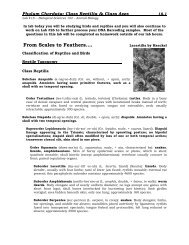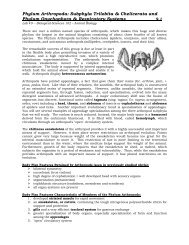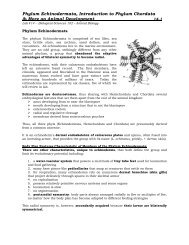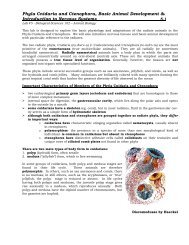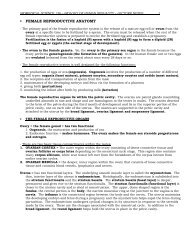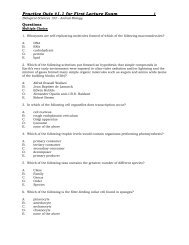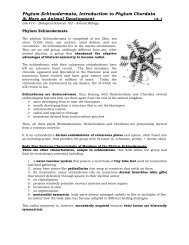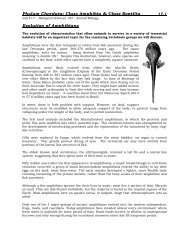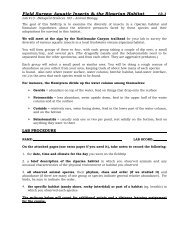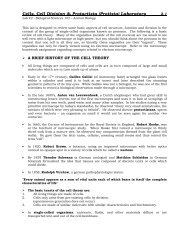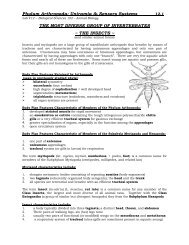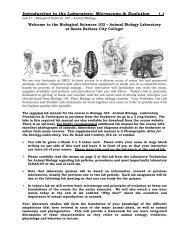Acoelomates: Phylum Platyhelminthes and Nemertea - Biosciweb.net
Acoelomates: Phylum Platyhelminthes and Nemertea - Biosciweb.net
Acoelomates: Phylum Platyhelminthes and Nemertea - Biosciweb.net
Create successful ePaper yourself
Turn your PDF publications into a flip-book with our unique Google optimized e-Paper software.
<strong>Acoelomates</strong>: <strong>Phylum</strong> <strong>Platyhelminthes</strong> <strong>and</strong> <strong>Nemertea</strong> <strong>and</strong><br />
Pseudocoelomates: Phyla Nematoda <strong>and</strong> Rotifera & Parasitism 6.15<br />
Lab #6 - Biological Sciences 102 – Animal Biology<br />
<strong>Phylum</strong> <strong>Nemertea</strong> (Rhynchocoela = ribbonworms)<br />
‣ Observe the specimens <strong>and</strong>/or diagrams of the species listed below.<br />
‣ Record the descriptive information requested at the end of the lab for this species.<br />
‣ Baseodiscus pun<strong>net</strong>i or other<br />
‣ List one anatomical structure seen in nemerteans that is not seen in other types of<br />
aceolomate or pseudocoelomate worms.<br />
<strong>Phylum</strong> Nematoda (roundworms)<br />
‣ Observe the specimens <strong>and</strong>/or diagrams of the species listed below.<br />
‣ Record the descriptive information requested at the end of the lab for this species.<br />
‣ Ascaris lumbricoides = human intestinal parasite<br />
‣ Observation of Nematode Body Structures<br />
‣ Using a microscope <strong>and</strong> the preserved, prepared slides identify the following structures of<br />
cestodes.<br />
‣ Examine a prepared slide of Ascaris lumbricoides male <strong>and</strong> female. Note the<br />
following structures: (you do not need to draw this, but you should be able to<br />
identify these in a diagram)<br />
‣ epidermis<br />
‣ cuticle<br />
‣ muscle cells & processes<br />
‣ intestine<br />
‣ pseudocoel<br />
‣ longitudinal muscles<br />
‣ lateral lines/nerve cords<br />
‣ excretory canals (as visible)<br />
‣ In the female Ascaris cross section locate the following:<br />
‣ ovary<br />
‣ oviduct<br />
‣ uterus Can you recognize the ova?<br />
‣ In the male Ascaris cross-section (on the same slide) locate the :<br />
‣ testes<br />
‣ vas deferens (as visible)<br />
‣ Observation of a Free-Living Nematode Roundworm<br />
Obtain a sample of living “vinegar eels”, Turbatrix aceti, <strong>and</strong> examine under the 10X<br />
objective <strong>and</strong> the 20X or 40X of the compound microscope. You should add Proto-Slo<br />
to the preparation before adding the cover slip.<br />
‣ Note the direction of movement, which is actually dorso-ventral (rather than<br />
lateral) bending.<br />
‣ What is it about the muscular structural arrangement in nematodes that permits<br />
only this characteristic “whip-like” motion?



